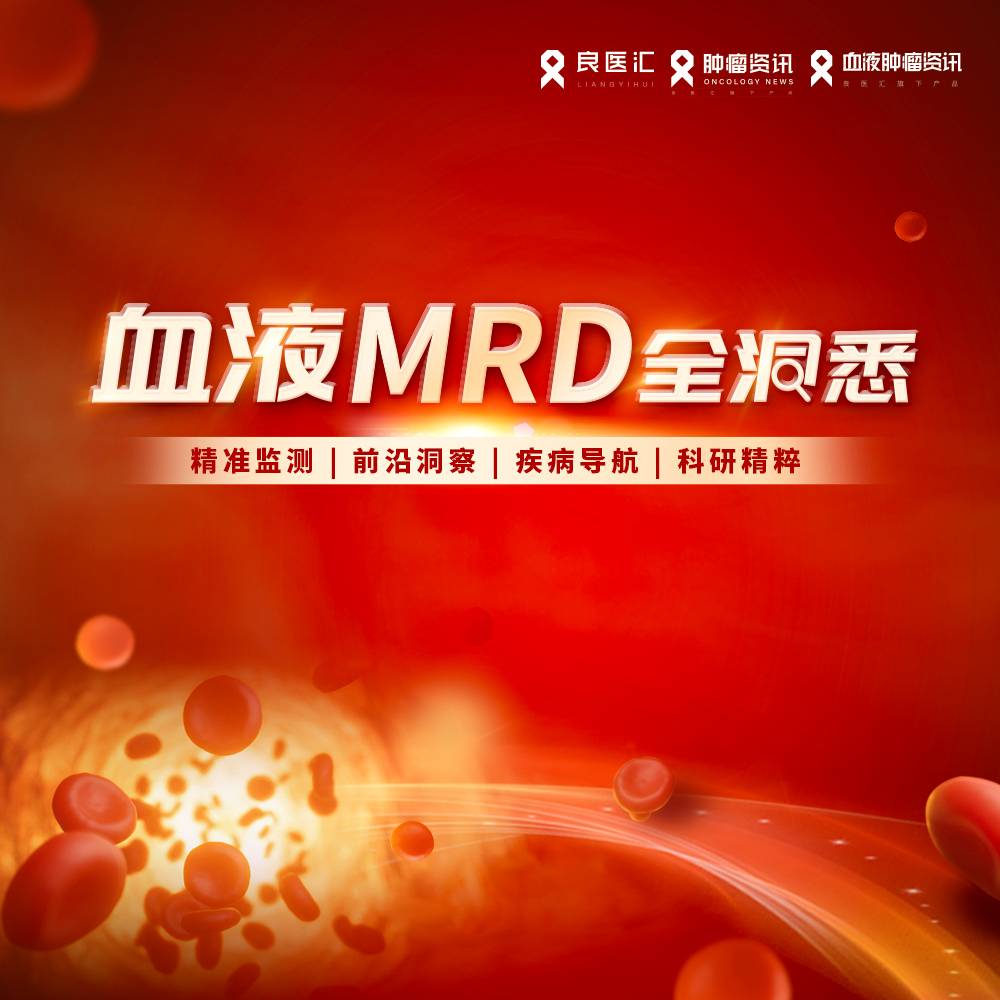乳腺浸润性小叶癌(ILC)是第二大常见浸润性乳腺癌组织学亚型(约占15%),仅次于非特殊类型的浸润性乳腺癌(NST) [1,2]。虽然ILC在临床、组织学和分子水平上不同于NST,但目前临床实践中,在进行全身治疗时几乎不考虑对两者不同的组织学类型进行区分。Annals of Oncology期刊(IF=51.769)发布综述[3]主要讨论ILC和NST之间病理学、临床和生物学的差异,以及ILC治疗面临的挑战和机会。

ILC临床表现
一般ILC患者的确诊年龄略大于NST患者(平均年龄分别为63.4岁和59.5岁)[4,5];
通过标准筛查项目检测ILC较为困难;
ILC常表现为肿瘤较大和淋巴结受累[5,6],且通常为多病灶 [7];
ILC患者晚期复发比NST患者更常见,ILC患者复发常在初诊10年后发生[5];
ILC具有独特的转移模式且转移扩散的范围更广,更易发生胃肠道和生殖转移[8,9];但与NST相比,雌激素受体(ER)阳性ILC患者肺、中枢神经系统(不包括在ILC中更常见的软脑膜疾病)和远处淋巴结转移的频率较低[5]。
ILC表征及病理诊断
根据世界卫生组织 (WHO) 第4版的乳腺肿瘤分类标准[10],ILC诊断不需要诸如免疫组织化学(IHC)或DNA测序等支持性技术。然而,最近一项全球病理学调查显示,绝大多数病理医生仍采用IHC进行ILC诊断[11]。目前研究发现,除了典型ILC外,还存在特殊的ILC亚型(约45%),并且这些 ILC亚型的治疗靶点和疗效可能不尽相同[10]。与NST相比,ILC的病理学诊断仍然是一个值得关注的问题。
一项回顾性分析显示,在地方病理学诊断为ILC的患者中,只有60%~66%经中心病理学诊断证实为ILC[12,13]。针对以上情况,最近的一项研究表明,通过使用 E-cadherin IHC诊断ILC可以显著提高病理医生评估结果之间的一致性[14]。
超过90%的原发性ILC表达ER和孕激素受体(PR)[15],但据报告,11%和38%患者的转移瘤中ER和PR表达水平较低[16]。人表皮生长因子受体2(HER2) 扩增/过表达通常仅见于3%~13%的病例[10]。此外,三阴性ILC仅占所有ILC的2%~9%[17]。
ILC分子特征
ILC中高肿瘤突变负荷(TMB,>10个突变/兆碱基)的比例显著高于NST,这表明,对于ILC患者而言,免疫检查点抑制剂 (ICI) 可能是一种有效的治疗选择。目前GELATO试验正在检验卡铂+阿替利珠单抗治疗转移性小叶乳腺癌的疗效,以期验证上述假设[18]。
ILC影像学检查
筛查、诊断、术前评估
ILC特殊的生长模式使其难以与正常乳腺组织区分,因此乳腺X射线检查在检测ILC方面存在一些局限性(灵敏度34%~83%,表1)。通过使用数字乳腺断层合成摄影(DBT)或对比增强数字化乳腺摄影(CEDM)可以提高二维乳腺X射线检查的准确性。在过去的几十年中,超声(US)技术有所改进,ILC检测的总体灵敏度从68%提高到88%~98%[19-21]。磁共振成像(MRI)是ILC检测灵敏度最高的方法,灵敏度为93%~100%[22]。
表1. 术前ILC成像技术概述
复发、转移性病灶评估
一旦患者接受了原发性ILC治疗,通常需要每年进行一次乳腺X射线检查,必要时辅以超声检查。计算机断层扫描 (CT)、骨扫描和18F-FDG正电子发射断层扫描 (PET)/CT 通常用于检测和监测乳腺癌的转移扩散。然而,18F-FDG ePET/CT检测局部晚期ILC患者转移的概率比NST低2.82倍[23]。与CT和18F-FDG ePET/CT相比,磁共振全身弥散加权成像(WB-DWI/MRI)有望更早发现ILC患者的远处转移[24]。
下图显示了 ILC 和 NST 之间的相似性、差异以及需要进一步研究的方向。
 图1.ILC患者与 NST 患者的诊断异同:(A) 早期诊断;(B) 转移灶检测。
图1.ILC患者与 NST 患者的诊断异同:(A) 早期诊断;(B) 转移灶检测。
早期ILC治疗
新辅助治疗
与NST患者相比,ILC患者从新辅助化疗(NACT)中获得的降期和保乳手术 (BCS) 获益似乎更少。低增殖率和高ER表达使ILC对化疗的敏感性降低,表现为低病理完全缓解 (pCR) 率,大多数ILC患者在NACT后仍需进行乳房切除术[25]。
由于大多数ILC具有高ER/PR表达,因此可考虑采取新辅助内分泌治疗(NET)。一项对61例ILC患者进行的回顾性研究显示,在治疗9个月后,61例患者中有40例符合切除条件[26];在淋巴结阳性ILC患者中,NET与NACT组患者的生存率无显著差异[27]。最近,有研究探索了NET联合CDK4/6抑制剂的疗效[28-30],但未报告对该方案对ILC的具体疗效;亦有研究在NACT基础上加用ICI取得了良好的结果,但目前仍缺乏单独的ILC结果分析[31]。
手术
鉴于肿瘤体积较大、多灶性发生率较高以及术前难以估计病灶的实际大小,因此,ILC患者(22%~52%)比NST 患者(14%~46%)进行乳房切除术的比例更高[15]。
辅助放疗
ILC和NST在BCS(边缘清晰)后进行全乳放疗的局部控制率相似。由于ILC通常是多灶性的,所以ILC一直是部分乳腺照射 (PBI) 试验的排除因素,因此不建议对ILC患者使用PBI[32]。目前看来,ILC患者的乳房切除术后放疗似乎与NST一样有效,可改善局部控制和生存率[33]。
辅助内分泌治疗
Breast International Group(BIG)1-98试验中,绝经后女性接受5年芳香化酶抑制剂 (AI) 来曲唑的获益优于他莫昔芬,且ILC获益比NST患者更明显[34]。TEAM试验(NCT00279448,NCT00036270)则比较了依西美坦治疗5年与他莫昔芬治疗2.5年,随后依西美坦治疗2.5年的疗效,其结果显示ILC与NST患者的无复发生存期无统计学显著差异(该研究随访时间仅限于5年,而ILC复发可能发生较晚)[35]。在2021年圣安东尼奥乳腺癌研讨会上展示的一项荟萃分析表明,AI与他莫昔芬在ILC与NST中的疗效差异并不明显[36]。此外,在所有临床高危ILC患者中,需要考虑延长内分泌治疗,并优选AI。在辅助内分泌治疗的基础上加用 CDK4/6 抑制剂的方案还需要进一步探索。
辅助化疗
Trapani等的回顾性荟萃分析发现,辅助化疗在ILC患者的总生存期(OS)方面无显著获益。然而,该荟萃分析纳入的大多数研究未校正ER、PR和HER2,且随访时间相对较短[37]。一项近期研究纳入了17,789例I-III期ILC患者,在校正了年龄、分期、淋巴结受累、组织学和放疗因素后,观察到接受内分泌单药治疗的患者与接受化疗和内分泌联合治疗的患者在5年后的 OS相似[38]。Tamirisa等人证实了辅助化疗在高危(定义为具有以下任一情况:镜下淋巴结受累,或肿瘤大小>20 mm和淋巴血管浸润)、ER阳性、HER2阴性ILC中的生存优势[39,40]。总体而言,尽管大多数ILC对化疗不敏感,但仍有一部分高危ILC患者可能从化疗中获益。
辅助抗HER2治疗
辅助治疗HERA研究 (NCT00045032) 的结果表明,ILC患者从曲妥珠单抗辅助治疗中的获益与NST患者相当[41]。未来有必要进行进一步研究,以分析HER2靶向治疗在早期治疗中对HER2突变ILC患者的疗效。
转移性ILC治疗
内分泌治疗+
最近,在内分泌治疗的基础上加用CDK4/6抑制剂已成为ER阳性转移性乳腺癌一线治疗的标准治疗。在这些支持性研究中,仅PALOMA-2研究报告了ILC患者的数据[42-49],由FDA对上述7项支持性研究进行的综合分析表明,CDK4/6抑制剂可显著改善ILC患者的PFS[50]。近日,对探索CDK4/6抑制剂联合氟维司群OS获益的3项研究进行的荟萃分析表明,ILC患者可基于该治疗方案获得生存获益[51]。
化疗
仅有少数比较化疗方案治疗转移性ILC与NST的试验。Pérez-Garcia等人对既往使用蒽环类药物后给予艾日布林的3项试验进行了回顾性分析,结果显示ILC患者与NST患者之间的疗效无差异[52]。此外,有证据表明,转移性ILC患者在卡培他滨治疗后的无病生存期与NST相似[53]。在临床实践中,在内分泌耐药或内脏危象的情况下,ILC患者可考虑化疗。
靶向治疗和ICI
尽管尚未对HER2靶向治疗和HER2靶向抗体-药物偶联物 (ADC) 对ILC患者的获益进行特定研究,但目前认为ILC与NST从上述治疗中的获益相似。大约15%的转移性ILC有潜在的HER2突变。基于第二代HER2酪氨酸激酶抑制剂(如来那替尼)的前瞻性研究(MutHER试验)的初步结果显示,ILC的缓解率高于NST[54]。
关于评价ICI治疗ILC有效性的临床数据有限。在既往经治ER阳性转移性乳腺癌患者中评价帕博利珠单抗疗效的 KEYNOTE-28 研究中,3例缓解者中有2例为ILC[55]。在 GELATO 试验 (NCT03147040) 中,转移性ILC患者先接受卡铂免疫诱导治疗12周,然后接受抗PD-L1治疗,以期通过这些药物之间的潜在协同作用增强抗癌免疫应答。到目前为止,23例患者接受了至少一个周期的阿替利珠单抗治疗(18例ER阳性,5例三阴性)。初步结果显示该治疗方案很有前景,但反应主要限于三阴性ILC患者[56]。
正在进行的研究及未来展望
随着人们对ILC与NST差异性的认识不断加深,越来越多新的研究关注于ILC患者的治疗。由于大多数ILC为ER阳性,因此ER信号通路备受关注,尤其是在早期ILC治疗中。机会试验TBCRC037(NCT02206984)评价了在诊断和初次手术之间的时间窗内给予不同内分泌治疗(他莫昔芬vs阿那曲唑vs氟维司群)的抗肿瘤增殖作用。ALTERNATE试验(NCT01953588) 则在新辅助治疗期间,比较了阿那曲唑、氟维司群单药治疗和阿那曲唑+氟维司群联合治疗对于ILC和NST患者的差异[57]。初步结果未显示两组患者对不同治疗的内在敏感性存在任何显著差异。此外,术前研究PELOPS(NCT02764541)将考察他莫昔芬+CDK4/6抑制剂与来曲唑+CDK4/6抑制剂对于治疗ILC和NST患者的缓解率差异。
由于ILC中E-钙黏蛋白的缺失使癌细胞对生长因子受体敏感,因此,未来ILC治疗的核心可能是抑制 E-钙黏蛋白下游的分子或通路。基于此,关于小分子 MET/ALK/ROS1抑制剂(如克唑替尼和恩曲替尼)的研究目前正在进行;新辅助多中心研究ROSALINE(NCT04551495)正在ILC患者中探索恩曲替尼与来曲唑联合治疗的疗效;针对转移性ILC,ROLo试验 (NCT03620643) 则在探索克唑替尼单药及联合氟维司群治疗ILC患者的疗效。
 图2. 以ILC为重点人群正在进行的系统性治疗方案试验概述。(A) 显示了 ER 信号通路与正在进行的试验靶标的示意图;(B) 该图显示,当在 CDH1 缺陷细胞中给予 ROS 抑制剂时,癌细胞不再存活,而正常细胞不受影响;(C) 显示了第二代 HER2 阻断(以绿色显示)的作用,其形成不可逆的共价键以抑制信号转导;(D) 显示了 PD-1 和 PD-L1 抑制(通过肿瘤细胞抑制 T 细胞失活)背后的机制。
图2. 以ILC为重点人群正在进行的系统性治疗方案试验概述。(A) 显示了 ER 信号通路与正在进行的试验靶标的示意图;(B) 该图显示,当在 CDH1 缺陷细胞中给予 ROS 抑制剂时,癌细胞不再存活,而正常细胞不受影响;(C) 显示了第二代 HER2 阻断(以绿色显示)的作用,其形成不可逆的共价键以抑制信号转导;(D) 显示了 PD-1 和 PD-L1 抑制(通过肿瘤细胞抑制 T 细胞失活)背后的机制。
另外,ILC其他的治疗机会可能在于ILC中更常出现的HER2和HER3突变之上。新兴ILC探索性研究则主要通过发现新的潜在靶点为未来的治疗策略奠定基础。许多临床前研究利用CDH1缺陷型乳腺癌模型来识别可用于治疗ILC的新靶点。此外,mTOR、PI3K/AKT抑制和IGF-1抑制均被认为是ILC的潜在靶点。最后,由于雄激素受体通常在ILC中富集,因此该通路也可能具有意义,尤其是在三阴性ILC中[58,59]。
 图3. ILC患者与 NST 患者在治疗和治疗标志物方面的异同。该图显示了 ILC 和 NST 之间的相似性、差异以及需要进一步研究的方向:(A) 指导治疗的预后预测标志物;(B) 局部治疗;(C) 全身治疗。
图3. ILC患者与 NST 患者在治疗和治疗标志物方面的异同。该图显示了 ILC 和 NST 之间的相似性、差异以及需要进一步研究的方向:(A) 指导治疗的预后预测标志物;(B) 局部治疗;(C) 全身治疗。
结论和观点
总体而言,ILC 研究和治疗面临许多困难。
ILC通常是临床试验中的一个小亚组,研究者很少对其进行单独分析。
此外,目前还没有用于定义ILC组织病理学诊断的金标准,欧洲小叶乳腺癌联盟的病理学工作组正在进行相关的深入研究。
ILC的术前评估面临许多挑战,除标准乳腺X射线摄影和超声外,还需要使用不同的补充成像技术,如乳腺MRI和DBT。尽管新的PET/CT 技术不断出现,研究人员关于WB-DWI/MRI的专业知识不断增长,但转移瘤筛查仍然具有挑战性。
当下我们还需根据额外的临床病理学特征对ILC患者做出早期治疗决策。既往研究证实,绝经后患者使用AI治疗有显著获益。多基因预后检测在指导 ILC患者辅助治疗中的作用有待进一步评价。尽管一些多基因检测对于ILC而言具有预后判断的意义,但目前尚不清楚其用于进一步指导ILC治疗决策的预测价值。
化疗对于ILC的作用似乎较小,但需要进一步明确ILC 患者亚组是否可能从加用化疗中获益。将来,将分子和生化/组织学特征结合可能是对ILC进行分类的最佳方法,而非仅根据其组织学表现进行分类。
对于大多数转移性ILC患者,内分泌治疗仍然是最重要的,目前一线治疗主要是加用 CDK4/6抑制剂。液体活检似乎对 ILC 具有预后价值,其在指导治疗中的应用有待进一步评价。目前ILC病因和治疗耐药关键机制的相关探索正在进行,关注 ILC的前瞻性临床研究不断出现,相信这些研究结果有望为ILC患者提供最佳治疗策略。
1. Sledge GW, Chagpar A, Perou C. Collective wisdom: lobular carcinoma of the breast. Am Soc Clin Oncol Educ B. 2016;35:18-21.
2. Reed MEM, Kutasovic JR, Lakhani SR, Simpson PT. Invasive lobular carcinoma of the breast: morphology, biomarkers and ’omics. Breast Cancer Res. 2015;17:12.
3. Van Baelen K, et al. Current and future diagnostic and treatment strategies for patients with invasive lobular breast cancer. Ann Oncol. 2022 Aug;33(8):769-785.
4. Li CI, Uribe DJ, Daling JR. Clinical characteristics of different histologic types of breast cancer. Br J Cancer. 2005;93:1046-1052.
5. Pestalozzi BC, Zahrieh D, Mallon E, et al. Distinct clinical and prognostic features of infiltrating lobular carcinoma of the breast: combined results of 15 International Breast Cancer Study Group clinical trials. J Clin Oncol. 2008;26:3006-3014.
6. Corona SP, Bortul M, Scomersi S, et al. Management of the axilla in breast cancer: outcome analysis in a series of ductal versus lobular invasive cancers. Breast Cancer Res Treat. 2020;180:735-745.
7. Biglia N, Maggiorotto F, Liberale V, et al. Clinical-pathologic features, long term-outcome and surgical treatment in a large series of patients with invasive lobular carcinoma (ILC) and invasive ductal carcinoma (IDC). Eur J Surg Oncol. 2013;39:455-460
8. Ferlicot S, Vincent-Salomon A, Médioni J, et al. Wide metastatic spreading in infiltrating lobular carcinoma of the breast. Eur J Cancer. 2004;40:336-341.
9. Vincent-Salomon A, Caly M, De Rycke Y, et al. Lobular phenotype related to occult-metastatic spread in axillary sentinel node and/or bone marrow in breast carcinoma. Eur J Cancer. 2009;45:1979-1986
10. Tan PH, Ellis I, Allison K, et al. WHO Classification of Tumours Editorial Board. The 2019 World Health Organization classification of tumours of the breast. Histopathology. 2020;77:181-185.
11. De Schepper M. SABCS 2021 ePosters - results of a worldwide survey on the currently used histopathological diagnostic criteria for invasive lobular breast cancer (ILC). Available at https://cattendee.abstract sonline.com/meeting/10462/Presentation/687. Accessed June 5, 2022.
12. Christgen M, Gluz O, Harbeck N, et al. Differential impact of prognostic parameters in hormone receptor-positive lobular breast cancer. Cancer. 2020;126:4847-4858.
13. Metzger O, Cardoso F, Poncet C, et al. Clinical utility of MammaPrint testing in invasive lobular carcinoma: results from the MINDACT phase III trial. Eur J Cancer. 2020;138:S5-S6.
14. Christgen M, Kandt LD, Antonopoulos W, et al. Inter-observer agreement for the histological diagnosis of invasive lobular breast carcinoma. J Pathol Clin Res. 2022;8:191-205.
15. Christgen M, Steinemann D, Kühnle E, et al. Lobular breast cancer: clinical, molecular and morphological characteristics. Pathol Res Pract. 2016;212:583-597.
16. Richard F, Majjaj S, Venet D, et al. Characterization of stromal tumorinfiltrating lymphocytes and genomic alterations in metastatic lobular breast cancer. Clin Cancer Res. 2020;26:6254-6265.
17. Christgen M, Cserni G, Floris G, et al. Lobular breast cancer: histomorphology and different concepts of a special spectrum of tumors. Cancers. 2021;13:3695.
18. AssessinG Efficacy of Carboplatin and ATezOlizumab in Metastatic Lobular Breast Cancer - Full Text View - ClinicalTrials.gov. Available at https://clinicaltrials.gov/ct2/show/NCT03147040?cond=GELATO&draw=2&rank=1. Accessed June 5, 2022.
19. Butler RS, Venta LA, Wiley EL. Sonographic evaluation of infiltrating lobular carcinoma. AJR Am J Roentgenol. 1999;172:325-330.
20. Selinko VL, Middleton LP, Dempsey PJ. Role of sonography in diagnosing and staging invasive lobular carcinoma. J Clin Ultrasound. 2004;32:323-332.
21. Paramagul CP, Helvie MA, Adler DD. Invasive lobular carcinoma: sonographic appearance and role of sonography in improving diagnostic sensitivity. Radiology. 1995;195:231-234.
22. Mann RM. The effectiveness of MR imaging in the assessment of invasive lobular carcinoma of the breast. Magn Reson Imaging Clin N Am. 2010;18:259-276.
23. Hogan MP, Goldman DA, Dashevsky B, et al. Comparison of 18F-FDG PET/CT for systemic staging of newly diagnosed invasive lobular carcinoma versus invasive ductal carcinoma. J Nucl Med. 2015;56:1674-1680.
24. Zugni F, Ruju F, Pricolo P, et al. The added value of whole-body magnetic resonance imaging in the management of patients with advanced breast cancer. PLoS One. 2018;13:e0205251.
25. Tubiana-Hulin M, Stevens D, Lasry S, et al. Response to neoadjuvant chemotherapy in lobular and ductal breast carcinomas: a retrospective study on 860 patients from one institution. Ann Oncol. 2006;17:1228-1233.
26. Dixon JM, Renshaw L, Dixon J, Thomas J. Invasive lobular carcinoma:response to neoadjuvant letrozole therapy. Breast Cancer Res Treat.2011;130:871-877.
27. Thornton MJ, Williamson HV, Westbrook KE, et al. Neoadjuvant endocrine therapy versus neoadjuvant chemotherapy in nodepositive invasive lobular carcinoma. Ann Surg Oncol. 2019;26:3166-3177.
28. Ma CX, Gao F, Luo J, et al. NeoPalAna: neoadjuvant palbociclib, a cyclin-dependent kinase 4/6 inhibitor, and anastrozole for clinical stage 2 or 3 estrogen receptor positive breast cancer. Clin Cancer Res.2017;23:4055-4065.
29. Cottu P, D’Hondt V, Dureau S, et al. Letrozole and palbociclib versus chemotherapy as neoadjuvant therapy of high-risk luminal breast cancer. Ann Oncol. 2018;29:2334-2340.
30. Prat A, Saura C, Pascual T, et al. Ribociclib plus letrozole versus chemotherapy for postmenopausal women with hormone receptorpositive, HER2-negative, luminal B breast cancer (CORALLEEN): an open-label, multicentre, randomised, phase 2 trial. Lancet Oncol. 2020;21:33-43.
31. Nanda R, Liu MC, Yau C, et al. Effect of pembrolizumab plus neoadjuvant chemotherapy on pathologic complete response in women with early-stage breast cancer: an analysis of the ongoing phase 2 adaptively randomized I-SPY2 trial. JAMA Oncol. 2020;6: 676-684.
32. Cardoso F, Kyriakides S, Ohno S, et al. Early breast cancer: ESMO Clinical Practice Guidelines for diagnosis, treatment and follow-up. Ann Oncol. 2019;30:1194-1220.
33. Stecklein SR, Shen X, Mitchell MP. Post-mastectomy radiation therapy for invasive lobular carcinoma: a comparative utilization and outcomes study. Clin Breast Cancer. 2016;16:319-326.
34. Metzger O, Giobbie-Hurder A, Mallon E, et al. Relative effectiveness of letrozole compared with tamoxifen for patients with lobular carcinoma in the BIG 1-98 trial. J Clin Oncol. 2015;33:2772-2779.
35. van De Water W, Fontein DBY, van Nes JGH, et al. Influence of semiquantitative oestrogen receptor expression on adjuvant endocrine therapy efficacy in ductal and lobular breast cancer-a TEAM study analysis. Eur J Cancer. 2013;49:297-304.
36. Hills RK, Oesterreich S, Metzger O, et al. PD14-08: effectiveness of aromatase inhibitors versus tamoxifen in lobular compared to ductal carcinoma: individual patient data meta-analysis of 9328 women with central histopathology, and 7654 women with e-Cadherin status. Cancer Res. 2022;82:PD14-08.
37. Trapani D, Gandini S, Corti C, et al. Benefit of adjuvant chemotherapy in patients with lobular breast cancer: a systematic review of the literature and metanalysis. Cancer Treat Rev. 2021;97:102205.
38. Yaghi M. SABCS 2021 ePosters - Does chemotherapy benefit patients with HRþ/HER2- invasive lobular breast cancer? Available at https://cattendee.abstractsonline.com/meeting/10462/presentation/638.Accessed June 5, 2022.
39. de Nonneville A, Jauffret C, Gonçalves A, et al. Adjuvant chemotherapy in lobular carcinoma of the breast: a clinicopathological score identifies high-risk patient with survival benefit. Breast Cancer Res Treat. 2019;175:379-387.
40. Tamirisa N, Williamson HV, Thomas SM, et al. The impact of chemotherapy sequence on survival in node-positive invasive lobular carcinoma. J Surg Oncol. 2019;120:132-141.
41. Metzger-Filho O, Procter M, de Azambuja E, et al. Magnitude of trastuzumab benefit in patients with HER2-positive, invasive lobular breast carcinoma: results from the HERA trial. J Clin Oncol. 2013;31: 1954-1960.
42. Sledge GW, Toi M, Neven P, et al. MONARCH 2: abemaciclib in combination with fulvestrant in women with HRþ/HER2-advanced breast cancer who had progressed while receiving endocrine therapy. J Clin Oncol. 2017;35:2875-2884.
43. Johnston S, Martin M, Di Leo A, et al. MONARCH 3 final PFS: a randomized study of abemaciclib as initial therapy for advanced breast cancer. NPJ Breast Cancer. 2019;5:5.
44. Finn RS, Martin M, Rugo HS, et al. Palbociclib and letrozole in advanced breast cancer. N Engl J Med. 2016;375:1925-1936.
45. Turner NC, Slamon DJ, Ro J, et al. Overall survival with palbociclib and fulvestrant in advanced breast cancer. N Engl J Med. 2018;379:1926-1936.
46. Hortobagyi GN, Stemmer SM, Burris HA, et al. Updated results from MONALEESA-2, a phase III trial of first-line ribociclib plus letrozole versus placebo plus letrozole in hormone receptor-positive, HER2-negative advanced breast cancer. Ann Oncol. 2018;29:1541-1547.
47. Slamon DJ, Neven P, Chia S, et al. Overall survival with ribociclib plus fulvestrant in advanced breast cancer. N Engl J Med. 2020;382:514-524.
48. Im S-A, Lu Y-S, Bardia A, et al. Overall survival with ribociclib plus endocrine therapy in breast cancer. N Engl J Med. 2019;381:307-316.
49. Cristofanilli M, Turner NC, Bondarenko I, et al. Fulvestrant plus palbociclib versus fulvestrant plus placebo for treatment of hormonereceptor-positive, HER2-negative metastatic breast cancer that progressed on previous endocrine therapy (PALOMA-3): final analysis of the multicentre, double-blind, phase 3 randomised controlled trial. Lancet Oncol. 2016;17:425-439.
50. Gao JJ, Cheng J, Bloomquist E, et al. CDK4/6 inhibitor treatment for patients with hormone receptor-positive, HER2-negative, advanced or metastatic breast cancer: a US Food and Drug Administration pooled analysis. Lancet Oncol. 2020;21:250-260.
51. Gao JJ, Cheng J, Prowell TM, et al. Overall survival in patients with hormone receptor-positive, HER2-negative, advanced or metastatic breast cancer treated with a cyclin-dependent kinase 4/6 inhibitor plus fulvestrant: a US Food and Drug Administration pooled analysis. Lancet Oncol. 2021;22:1573-1581.
52. Pérez-Garcia J, Cortés J, Metzger Filho O. Efficacy of single-agent chemotherapy for patients with advanced invasive lobular carcinoma: a pooled analysis from three clinical trials. Oncologist.2019;24:1041-1047.
53. Thijssen S, Wildiers H, Punie K, et al. Features of durable response and treatment efficacy for capecitabine monotherapy in advanced breast cancer: real-world evidence from a large single-centre cohort. J. Cancer Res Clin Oncol. 2021;147:1041-1048.
54. Jhaveri K, Park H, Waisman J, et al. Neratinib þ fulvestrant þ trastuzumab for hormone-receptor positive, HER2-mutant metastatic breast cancer, and neratinib þ trastuzumab for metastatic triple negative disease: latest updates from the SUMMIT trial. Available at https://assets.onlineeventapp.com/utsabcsannual21/EventFiles/sabcs2021/PresentationFiles/Uploads/23148034/30855167/Jhaveri GS4-10.pdf.Accessed June 5, 2022.
55. Rugo HS, Delord JP, Im SA, et al. Safety and antitumor activity of pembrolizumab in patients with estrogen receptor-positive/ human epidermal growth factor receptor 2-negative advanced breast cancer 2018;24(12):2804-2811. Accessed June 5, 2022.
56. Voorwerk L, Horlings H, Van Dongen M, et al. LBA3 – Atezolizumab with carboplatin as immune induction in metastatic lobular breast cancer: first results of the GELATO-trial. Available at https://cslide.ctimeetingtech.com/play/7L2406w035j. Accessed June 5, 2022.
57. Ma CX, Suman VJ, Leitch AM, et al. ALTERNATE: neoadjuvant endocrine treatment (NET) approaches for clinical stage II or III estrogen receptor-positive HER2-negative breast cancer (ERþ HER2- BC) in postmenopausal (PM) women: Alliance A011106. J Clin Oncol. 2020;38:504.
58. Riva C, Dainese E, Caprara G, et al. Immunohistochemical study of androgen receptors in breast carcinoma. Evidence of their frequent expression in lobular carcinoma. Virchows Arch.2005;447:695-700.
59. Taniguchi K, Takada S, Omori M, et al. Triple-negative pleomorphic lobular carcinoma and expression of androgen receptor: personal case series and review of the literature. PLoS One. 2020;15:e0235790.
排版编辑:肿瘤资讯-Paine











 苏公网安备32059002004080号
苏公网安备32059002004080号


